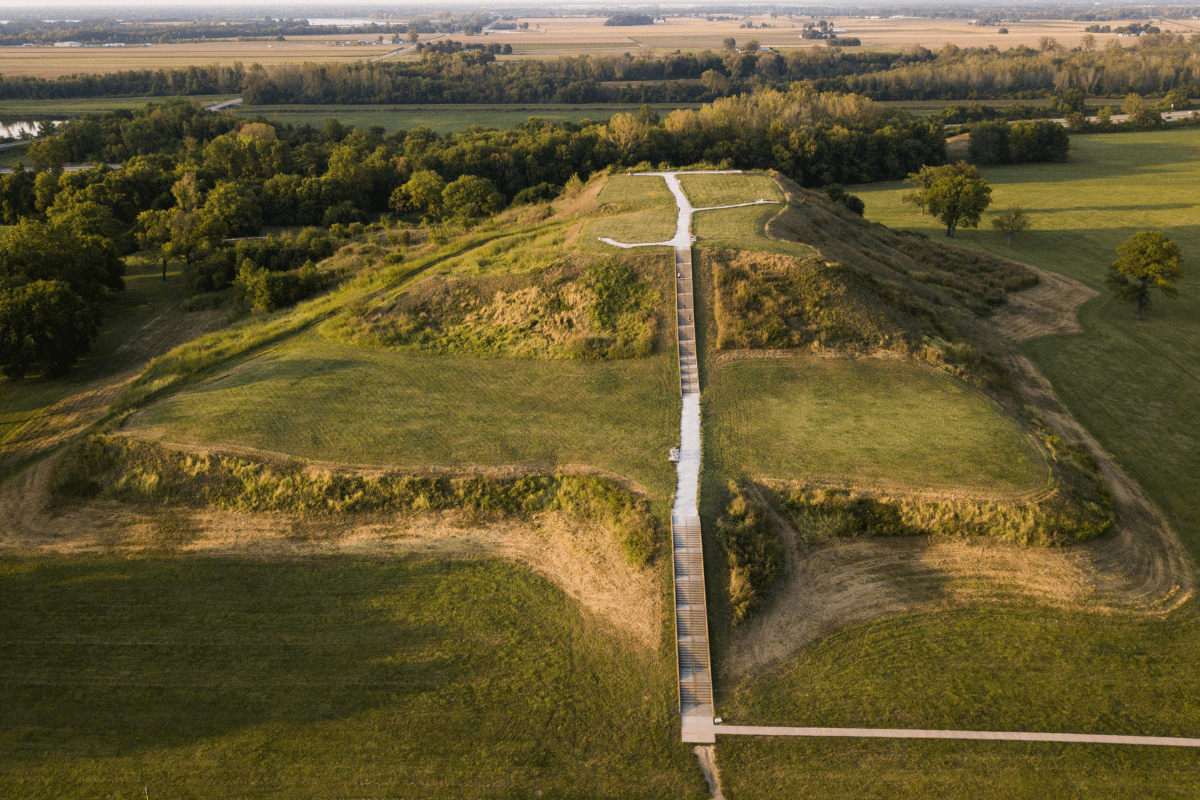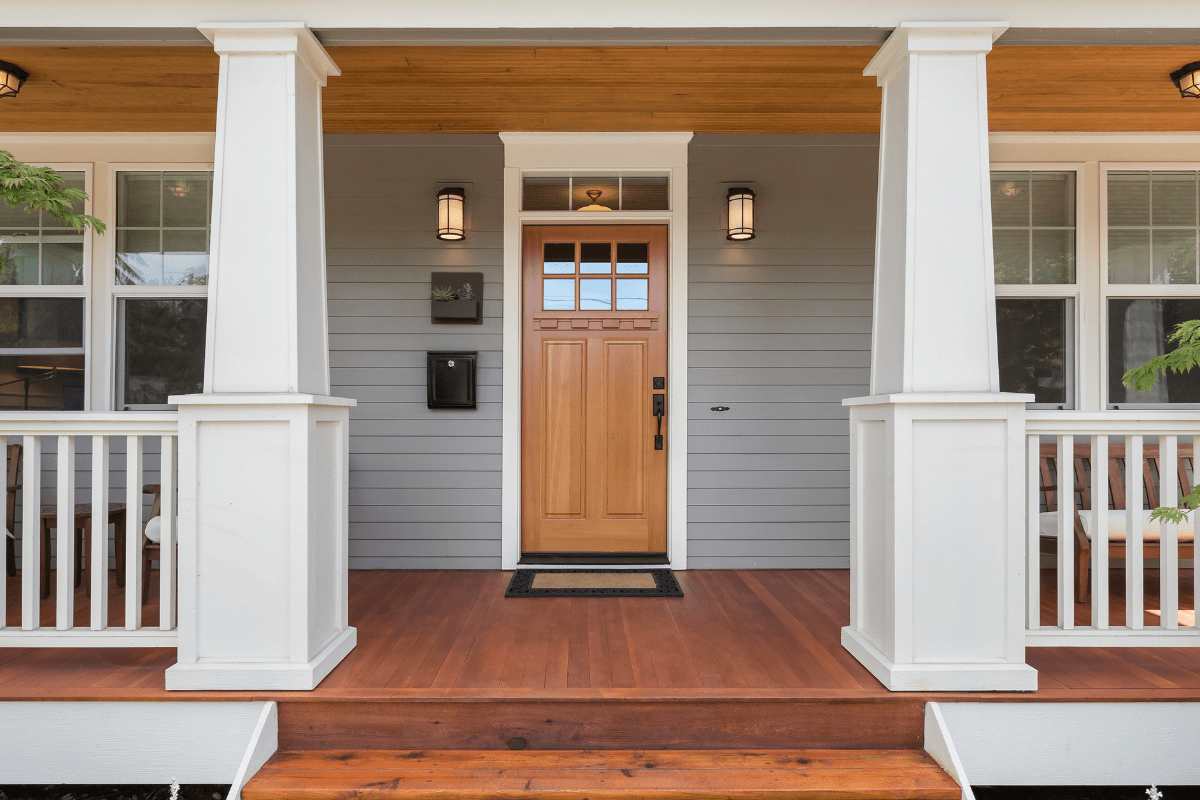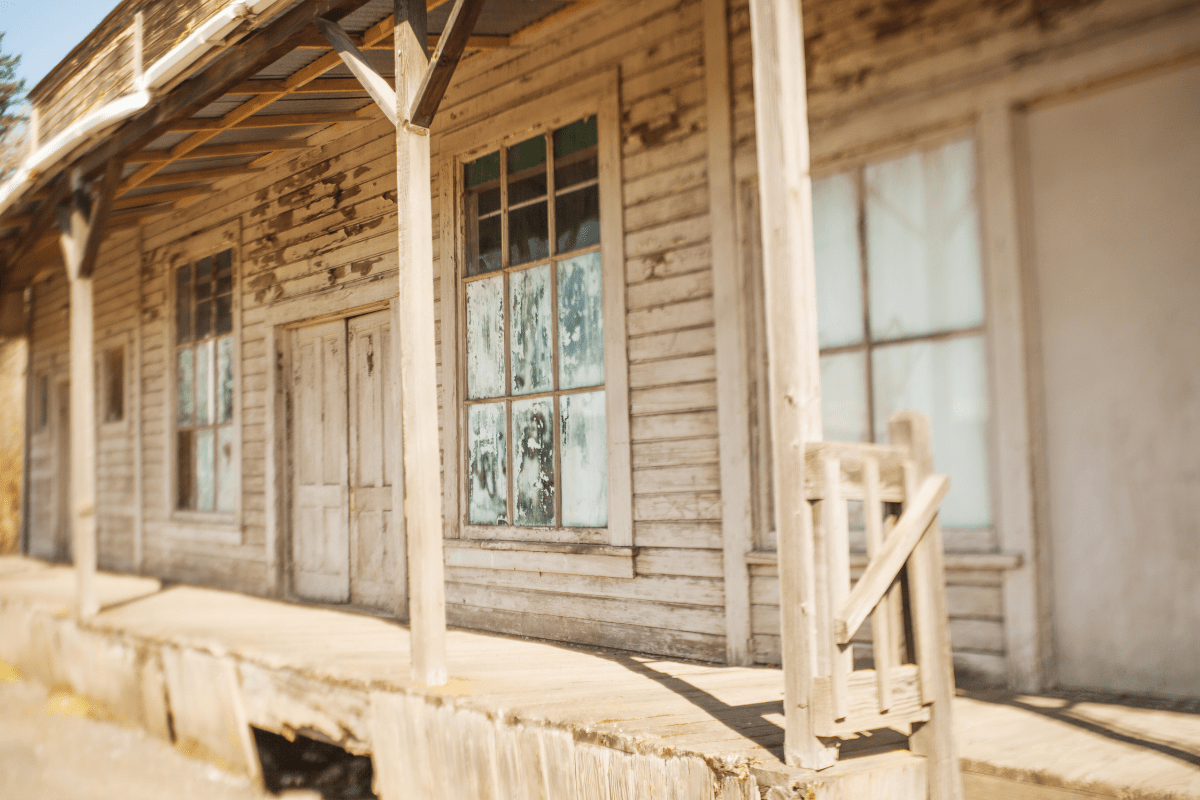Illinois might not be the first place that pops into your head when you think about history, but that's exactly why it should. From ancient civilizations that put medieval London to shame to Frank Lloyd Wright's architectural rebellion against Victorian stuffiness, the Prairie State serves up historical experiences that'll make your Instagram followers think you've gone all intellectual on them.
The Lincoln trail: Following honest Abe's footsteps
Springfield basically runs on Lincoln energy, and honestly, they've earned the right. The city preserved not just buildings but entire neighborhoods where America's 16th president lived, worked, and probably complained about his neighbors just like the rest of us.
Lincoln's actual house (not a replica!)
The Lincoln Home stands as the only house Lincoln ever owned, which makes you wonder about his real estate priorities. This Greek Revival beauty hosted the Lincolns from 1844 to 1861, and thanks to son Robert's stipulation when he donated it, you can tour it absolutely free. Forever. That's right… no admission fee, ever.
Here's the catch though: those free tour tickets disappear faster than deep-dish pizza at a Chicago potluck. The visitor center starts handing them out first-come, first-served each morning, and during summer, you'd better channel your inner early bird. The four-block preserved neighborhood surrounding the home gives you the full 1860s vibe, complete with wooden sidewalks that'll make you grateful for modern concrete.
The museum that makes history fun (seriously)
If you think presidential libraries are just dusty book collections, the Abraham Lincoln Presidential Library and Museum will blow your mind. This 200,000-square-foot complex somehow makes learning about the Civil War as engaging as binge-watching your favorite series.
For $15 (adults), you get:
- Immersive theater experiences
- Original Gettysburg Address manuscript
- Interactive exhibits that don't feel cheesy
- Enough content for 2.5+ hours
Pro tip: Buy those tickets online unless you enjoy standing in lines while other people waltz past you with their pre-purchased passes. The museum figured out how to combine serious scholarship with entertainment value, which is basically the holy grail of educational attractions.
Where Lincoln learned to lawyer and lead
Twenty miles northwest of Springfield, New Salem State Historic Site reconstructs the frontier village where young Abe transformed from rail-splitter to politician. The Civilian Conservation Corps rebuilt 23 log structures here in the 1930s, with only the Onstot Cooper Shop surviving as an original building.
Between May and October, costumed interpreters bring the 1830s to life, demonstrating everything from blacksmithing to candle-making. The 700-acre site includes hiking trails and 160 camping sites, so you can literally sleep where Lincoln walked. And yes, it's completely free, because Illinois knows how to do historic sites right.
The tomb where people rub noses for luck
Oak Ridge Cemetery houses Lincoln's final resting place, a 117-foot granite obelisk that took America's donations to build. Visitors maintain the quirky tradition of rubbing the nose on Gutzon Borglum's bronze Lincoln bust… the same sculptor who later carved Mount Rushmore, because apparently he had a thing for presidential faces.
Summer Tuesday evenings feature flag ceremonies with Civil War reenactors, while year-round "Porch Talks" share Lincoln stories you won't find in textbooks. Everything here is free, honoring Lincoln's democratic principles and your vacation budget.
Chicago's architectural revolution: When buildings got interesting
Chicago didn't just rebuild after the Great Fire… it basically invented modern architecture. The city's buildings tell the story of American innovation better than any history book.
Frank Lloyd Wright's home laboratory
The Frank Lloyd Wright Home and Studio in Oak Park is where America's most famous architect lived and worked from 1889 to 1909. This is ground zero for the Prairie School movement, where Wright experimented with ideas that would eventually influence buildings worldwide.
The home showcases Wright's early obsessions: compressed entryways that suddenly open into grand spaces (basically the architectural equivalent of a surprise party), and his studio's wild octagonal shapes that probably made his drafting team dizzy. Daily tours run from 10:30 AM to 4:00 PM, with Frank Lloyd Wright Trust members getting in free.
The Robie House: Wright's masterpiece
Wright's Robie House in Hyde Park achieved what every architect dreams of: UNESCO World Heritage status and recognition as one of the 10 most significant structures of the 20th century. Those dramatic 20-foot cantilevered roofs look like they're defying physics, which was basically Wright's specialty.
Tours range from $25 to $35, depending on how deep you want to dive into architectural nerdery. Fun fact: Frederick Robie only lived here 14 months before financial troubles forced him out. Apparently commissioning architectural masterpieces is expensive… who knew?
Downtown's hidden Wright gem
The Rookery Building showcases Wright's only work in the Chicago Loop, his 1905 redesign of the interior light court. The building itself pioneered the transition from massive masonry to steel frame construction, solving Chicago's "our city is built on swamp" problem with floating foundation technology.
Wright's renovation introduced white Carrara marble and Persian-inspired ornament, creating a luminous space that's freely accessible to the public Monday through Friday during business hours. Just walk in like you belong there… because you do.
Architecture central command
The Chicago Architecture Center serves as mission control for architecture enthusiasts. Located in a Mies van der Rohe building (because of course it is), the center offers 85+ different tours including the TripAdvisor-rated number one boat tour in America.
Adult admission costs $15, but the Chicago City Model alone, featuring 4,200+ building replicas, makes it worth every penny. Illinois residents score periodic free days throughout the year, because even world-class architecture centers understand budget constraints.
Ancient civilizations: Before America was America
Long before European settlers arrived, Illinois hosted civilizations that would make ancient Rome jealous. These sites reveal sophisticated societies that thrived for centuries.
Cahokia: The metropolis time forgot
Cahokia Mounds State Historic Site preserves North America's largest pre-Columbian settlement north of Mexico. At its peak around 1050-1350 CE, this city housed 15,000-20,000 residents… larger than London at the time. Let that sink in for a moment.
The site features:
- Monks Mound: 100 feet tall, 14 acres
- 80 remaining earthen mounds
- UNESCO World Heritage designation
- Recent discoveries of 900-year-old ceramics
- Free admission always
The interpretive center is closed for renovations through most of 2025, but the grounds remain open dawn to dusk. You can literally walk among the remains of a thousand-year-old metropolis for free.
Dickson Mounds: Indigenous history done right
The Dickson Mounds Museum near Lewistown represents a major shift in how we present Native American history. Under the leadership of Logan Pappenfort, a member of the Peoria Tribe, the museum now emphasizes indigenous perspectives on 12,000 years of Illinois River Valley history.
The museum stopped displaying human remains in 1992 and now focuses on repatriation efforts. It's free, open Tuesday through Saturday, and offers a respectful, educational look at pre-contact Illinois cultures.
Fort de Chartres: French colonial survivor
Fort de Chartres near Prairie du Rocher stands as the only surviving French stone fort in the North American interior. The powder magazine, built between 1753 and 1754, claims the title of Illinois' oldest building.
Annual reenactments bring the 18th century alive:
- June's Rendezvous
- October's French Colonial Crafts
- Various military demonstrations
- Living history programs
A suggested donation of $4 for adults supports ongoing preservation of this National Historic Landmark.
Freedom seekers and Civil War stories
Illinois played a pivotal role in America's struggle with slavery and division. Recent research reveals the state's involvement was far more extensive than previously understood.
The Underground Railroad: More extensive than we knew
A November 2024 task force report identified over 200 potential Underground Railroad sites statewide, with estimates suggesting 4,500-7,000 freedom seekers passed through Illinois. Only 25 sites have been verified so far, meaning thousands of stories remain untold.
The Owen Lovejoy Homestead in Princeton stands as one of the most significant verified stations. Lovejoy, brother of martyred newspaper editor Elijah, openly declared his assistance to freedom seekers in Congress. The 1838 house features a secret compartment above the stairs, and Frederick Douglass himself visited here. Open Friday through Sunday from May to September, the site asks only a $3 donation.
Chicago's Quinn Chapel AME Church, the city's oldest Black church dating to 1847, operated as a station with an active Vigilance Committee after the 1850 Fugitive Slave Act. The current 1891 building plans a second-floor Underground Railroad museum. Sunday worship services at 10 AM remain open to all, with tours available by appointment.
Rock Island Arsenal: Where the Civil War got complicated
Rock Island Arsenal housed one of the largest Confederate prisoner-of-war camps, confining 12,400 prisoners between 1863 and 1865. Nearly 2,000 died in captivity, their graves marked by distinctive pointed headstones in the Confederate Cemetery.
Today's visitors must pass FBI background checks at the Moline Gate (yes, really), but the free Rock Island Arsenal Museum rewards the effort. As America's second-oldest Army museum, it offers extensive Civil War exhibits alongside military history spanning centuries.
Hidden gems that'll make you look like a travel genius
Beyond the famous sites, Illinois harbors attractions that'll have your travel companions asking, "How did you even find this place?"
Villa Kathrine: Mediterranean madness in Quincy
The Villa Kathrine proves that money and eccentricity create fascinating combinations. Wealthy wanderer W. George Metz built this Moroccan-inspired castle on the Mississippi River bluffs in 1900 after extensive world travels. Complete with harem room, reflecting pool, and minaret, it's basically what happens when someone with too much money watches Aladdin.
Now serving as Quincy's tourist information center, the villa charges just $5 for adults to explore this architectural fever dream.
The Bahá'í Temple: Architectural spirituality
The Bahá'í House of Worship in Wilmette represents one of only eight continental Bahá'í temples worldwide. Completed in 1953, its 135-foot dome features intricate lace-like ornamentation that seems to defy gravity.
Free admission and 6 AM to 6 PM daily hours welcome visitors of all faiths. You can reach it via the CTA Purple Line, making this architectural marvel surprisingly accessible for a spiritual experience.
Bishop Hill: Swedish utopia on the prairie
Bishop Hill preserves an entire Swedish religious colony from 1846, where descendants of the original colonists still live among the historic buildings. With a population of just 113, this National Historic Landmark community hosts authentic cultural events that'll transport you to 19th-century Sweden… in Illinois.
The Colony Church made 2024's Most Endangered Historic Places list, but the free state historic sites remain open for exploration.
Route 66: America's Main Street
Illinois offers 436 miles of Route 66 nostalgia, complete with:
- Fire-breathing Kaskaskia Dragon (Vandalia)
- 30-foot Gemini Giant (Wilmington)
- Classic diners and motels
- Quirky roadside attractions
- Photo ops galore
Most attractions are free, though you might need coins to make the dragon breathe fire for 10 minutes.
Planning your historic Illinois adventure
Success in exploring Illinois' historic sites comes down to timing, accessibility awareness, and budget planning. Here's how to make the most of your historical journey.
When to visit (and when to avoid the crowds)
Springfield's Lincoln sites see crushing crowds in summer, especially around holidays. Early morning arrivals score tour tickets, while afternoon visitors score disappointment. New Salem's costumed interpreters only work May through October, so winter visits mean fewer crowds but also fewer experiences.
Prairie sites like Cahokia Mounds and New Salem shine in spring and fall when weather permits comfortable exploration. Civil War reenactments cluster in summer months, while indoor sites like museums offer year-round climate-controlled comfort.
Accessibility considerations
Many historic sites struggle with accessibility due to their age. Fully accessible sites include Camp Butler National Cemetery, Rock Island Arsenal Museum, and the Abraham Lincoln Presidential Library. However, many historic homes offer only first-floor accessibility.
New Salem requires walking up to a mile on sealed stone paths that become treacherous when wet. Always contact sites directly to arrange specific accommodations… they're generally happy to help but need advance notice.
Budget-friendly history
Illinois excels at making history accessible to all budgets. These major sites charge no admission:
- Lincoln Home National Historic Site
- Lincoln Tomb
- New Salem
- Cahokia Mounds
- Dickson Mounds Museum
- Fort de Chartres
- John Deere Historic Site
Even paid sites remain affordable, with most museums charging $5-15. Illinois residents often get free days at state facilities. Combine free sites with selective paid experiences for rich historical tours that won't drain your vacation fund.
The future of Illinois history
Illinois continues investing in preserving and sharing its historical treasures. Proposed legislation would create an Illinois Freedom Trails Commission to coordinate Underground Railroad site preservation. The National Park Service evaluates sites for Network to Freedom designation, while archaeological work at Cahokia continues revealing new discoveries.
These aren't just old buildings and empty fields… they're portals to understanding how America became America. From ancient Native American cities to Lincoln's journey from frontier lawyer to president, from architectural innovation to freedom seekers' courage, Illinois preserves the authentic places where history happened.
So next time someone suggests Illinois is just cornfields and Chicago, remind them it's actually home to UNESCO World Heritage Sites, the birthplace of modern architecture, and more history per square mile than most states can claim. Your Instagram followers will thank you for the variety, and your brain will thank you for the education disguised as vacation.





